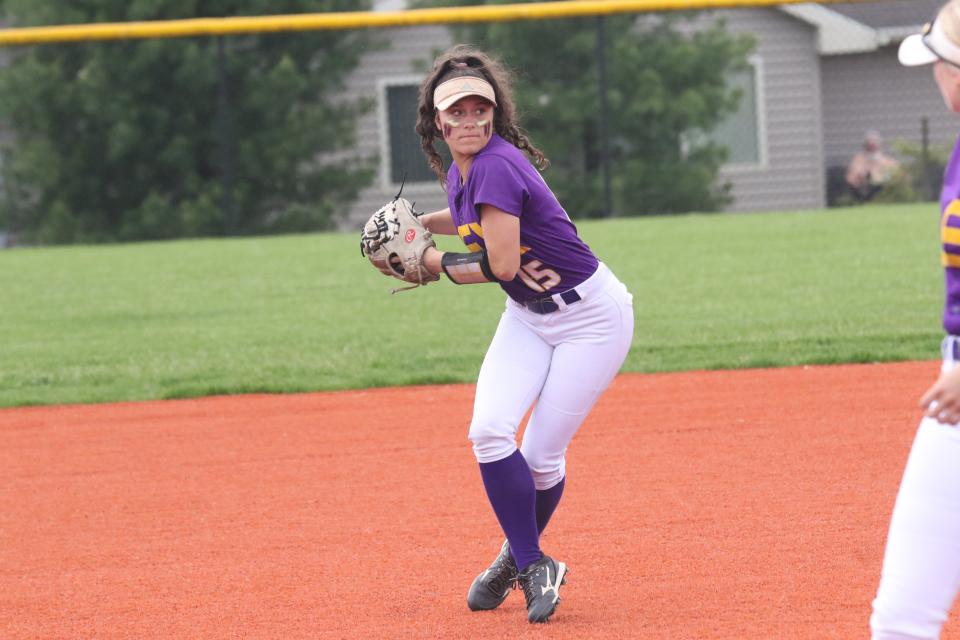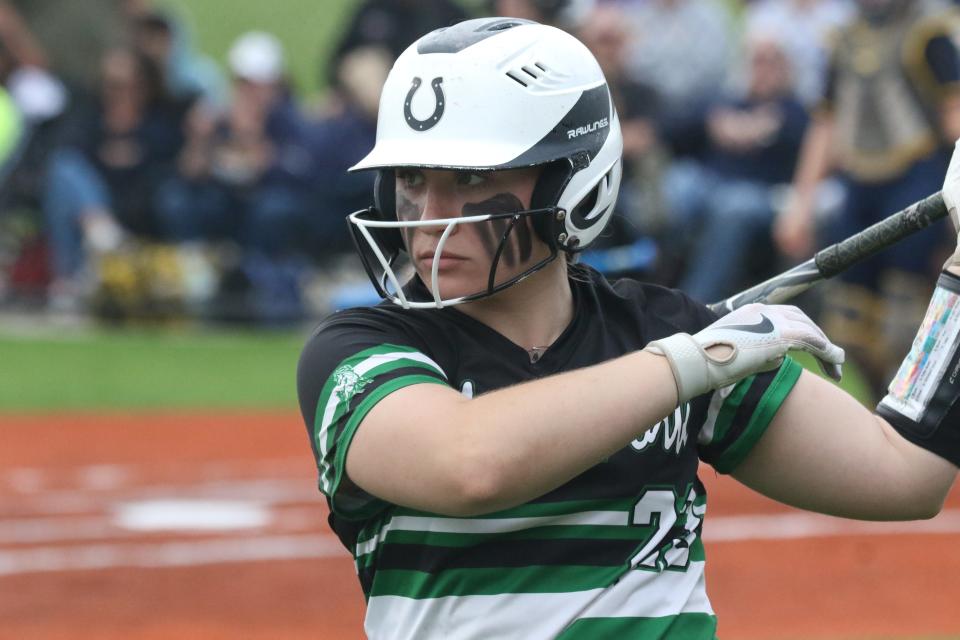Jake's Take | OHSAA's division expansion is far from a money grab. Here is why.
COLUMBUS — It was the first comment I heard when it became public knowledge that the Ohio High School Athletic Association was looking into division expansion.
It's a money grab.
And I couldn't disagree more.
DIVISION EXPANSION: State tournaments to see massive change after division expansion
Starting in the 2024-25 athletic season, boys and girls soccer, volleyball, boys and girls basketball, baseball and softball will expand from four divisions to seven. And that prompted people to get up in arms because they thought that created more tournament games and therefore brought the OHSAA more money since all postseason ticket sales goes directly to the nonprofit organization.
In the above sports mentioned, every school is awarded an opportunity to play in the postseason. It is actually impossible to have more tournament games when the number of schools remain the same. In boys basketball, there are 800 teams in Ohio in four divisions. When it expands to seven divisions next year, guess how many teams will be in the postseason? That's right, 800. You cannot have more tournament games with the same amount of teams.
"Matter of fact, mathematically, one of our guys actually figured out it could be three less games with more first round byes coming," OHSAA Executive Director Doug Ute said at the annual Ohio Prep Sportswriters Association meeting last week.
I used boys basketball as the example, but it is the same across all sports affected by division expansion. Basketball is just the biggest money-maker among those sports.
Then comes the argument that there are more regional tournament games and that is when the ticket prices start to see an increase which is all very true and very valid points, but what isn't understood is just how much the OHSAA spends on venue rentals for those regional tournaments. At the sectional and district level, those games are played at local high schools which cost nothing to rent and actually benefit the host schools because they get to keep the concession money.

At the regional tournament, that is when you start to see games held at small colleges across the state. Here in the Northwest, they are at Bowling Green State University for boys basketball. Anyone still getting chills from that magical run by the Shelby Whippets? Holding games there isn't exactly cheap. The OHSAA foots that rental bill and while the ticket prices are higher, the organization barely comes out in the black. The same goes for UD Arena at the University of Dayton where the state championship basketball games are held.
"We produce most of our money, the 80% of our budget that comes in from ticket sales, in that first couple weeks of football and basketball because of the volume of games," Ute said. "We don't make money in Dayton at the state championships. That isn't our bread and butter.
"We are not projecting it to make us a lot of money and we also aren't projecting it to lose money either," Ute added. "We don't know yet, but we do know our expenses climb at the regional and state level. It costs us more to put a game on at the University of Dayton than it does at Olentangy High School."
OHSAA has a duty to make smart business decisions
Yes, the OHSAA is a nonprofit organization, but that doesn't mean it shouldn't operate like a business. If it weren't for the OHSAA, Ohio high school sports wouldn't have the state tournaments that make playing athletics in this great state such an incredible experience. Those fun district tournaments between area schools wouldn't exist. Those memorable trips to BGSU? Gone. That once-in-a-generation run at a state championship? Forget about it.
Running those tournaments cost money. Hiring people to help run the tournaments cost money. And most of those tournaments actually cost more than the money they bring in. Most of the OHSAA's revenue comes from football and boys basketball. I didn't make the rule. It is just how it is. Want that to change? Do something about it yourself.
Giving high school athletes those memorable opportunities are far from free.
"We gave girls an opportunity to wrestle and boys an opportunity to play volleyball," Ute said. "We sponsor cheerleading and those are sports we aren't making money on. It is all about giving kids an opportunity to compete. I will not apologize for giving kids an opportunity and getting extra revenue that comes along with that because we are a non-profit and without that money, there is no mission."
And there almost wasn't a mission back in 2020 when the COVID-19 pandemic ended the spring sports season and turned the fall and winter seasons into a circus. With limitations on attendance throughout the year, the OHSAA was in serious trouble. As Ute said, 80% of the organizations budget comes from tournament ticket sales and with the attendance limitations, the OHSAA had to get creative to stay alive.
And that was when it was announced that every high school football team would make the playoffs. And boy oh boy did the money grab accusations fly. And maybe it was. But the OHSAA did what it had to do to survive just like any business owner did during that time or would do today if they were faced with the same situation. So be careful throwing rocks in a glass house.
Before that 2020 season, it was announced that the football playoffs would expand from eight teams per region to 12. Again, the OHSAA was accused of a money grab tactic when it was actually the Ohio High School Football Coaches Association that wanted the expansion. It would leave four teams in each region with a first-round bye in the playoffs so it wasn't like it added a ton of games.
We never saw a 12-team-per-region playoff because COVID forced the OHSAA to make a difficult decision to allow everyone in. The following year, it was expanded to 16 teams per region to eliminate that first-round bye. Again, the OHSAA was accused of another money grab.

"That did generate more revenue, but I say it all the time, ask the kids at Milan Edison when they upset Bellevue as a 16-seed in that first year of playoff expansion if it watered down the playoffs," Ute said. "We had three 15-seeds win this year and a 12-seed in Division I almost win a state title. Three years ago, they aren't even in the playoffs. You give kids opportunities, watch out."
And that is what it is all about. But the OHSAA still has to be financially responsible. When Ute took over as Executive Director three years ago, the OHSAA was operating with a month and a half cash on hand and had four straight years of deficit spending. One wrong move and the OHSAA would go under and you can say good bye to those memorable tournaments. Ute, who spent his entire career in education and reached the panicle as a superintendent during his 35-year career, put that super hat on and devised a plan to bring stability to the OHSAA's financial situation.
"As a school superintendent, I wanted nine months cash on hand just for a rainy day," Ute said. "The difference with a school is I can tell you exactly how much money we will bring in from property tax, 1% income tax and state funding, but here at the OHSAA, I cannot tell you what matchups we will have and how well games get attended."
So, if you were one of those who were throwing money-grab jabs at the OHSAA, think about if you had a business and didn't operate with a rainy-day fund. Then as yourself who the clown would be in that scenario.
I'll leave you with this. It was one of my favorite things Ute said during the OPSWA meeting. It is a lot so just take it in.
"Last year in Week 1 of the football playoffs, we sold 134,0000 tickets," Ute said. "We had 17 straight weeks where you could wear shorts and a t-shirt to a football game on Friday night. Just perfect weather. But if it rained sideways and we only sold 20,000 tickets, we better have a rainy day fund because we get no money from the state.
"Right now, we are at 11 months cash on hand and in August, we will be back to nine. We are not interested in getting 12 or 15 months. Last year, each of our member schools got a check for $1,250. We are taking that 11 months and writing bigger checks to our schools and we are going to be investing money into recruiting and retaining officials. We just want that nine months as a protective layer."
"It is not about money. It is about opportunity for kids."
Jake Furr is the sports reporter for the Mansfield News Journal and the Vice President of the Ohio Prep Sportswriters Association. He can be reached via call or text at 740-244-9934 or via email at jfurr@gannett.com.
This article originally appeared on Mansfield News Journal: Jake's Take | OHSAA's division expansion is far from a money grab. Here is why.

